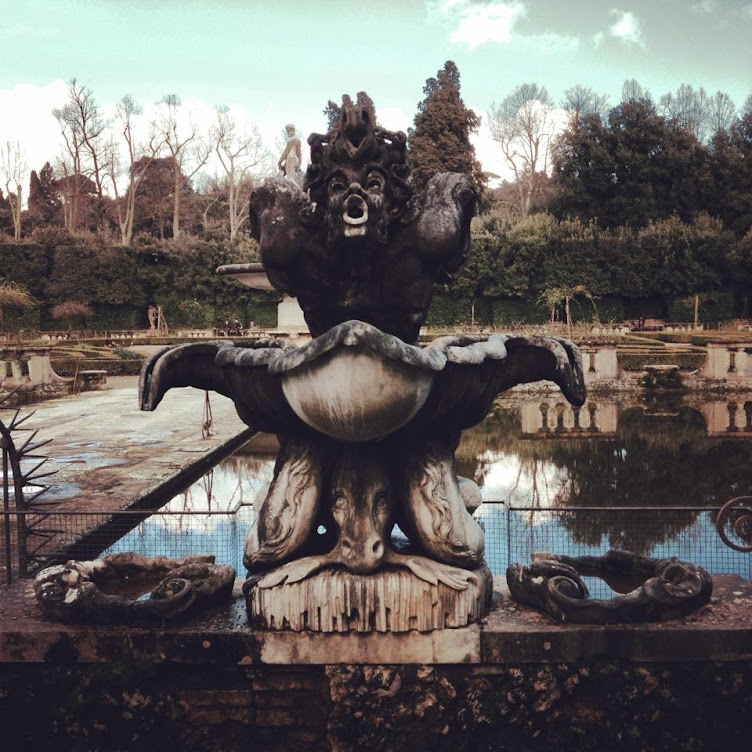Reading
Response 4
This week, we learned about coffee’s context in Western
Europe, and how it represents the cultural exchange between the East and the
West in the 16th century. It was especially pertinent to us because
we had learned in such detail about coffee in the Ottoman Empire, but the
movement of coffee and coffee houses to Western Europe is a significant part of
the cultural encounter as well. This ties in well with the idea of the
Mediterranean as a place of fluid identity (as opposed to the modern
construction of identity that we are more familiar with). The coffee in Europe
and coffee houses that they were enjoyed in the Ottoman Empire are different,
but have some similarities- emblematic of their relations.
This week we got to think about the various
ways that concepts of identity changed. Identity used to be based off of nation
and religion; but in this time, there is a different notion of identity. My
understanding of the change that we read and talked about this week was that a
person’s nation and religion were their markers of identity, but within a
nation there wasn’t always a homogenous language. Today, usually within a
nation, everyone speaks the same language and language is another very important
marker of national identity. In the 16th and 17th
centuries, identity was fluid as people moved through space to various areas of
the Mediterranean, and I will discuss a few examples of this below.
Venice was in the middle of Western Europe, but it had
all the markers of an Eastern city, making it a “Western, borderline Eastern”
city. One fascinating example of this that we discussed in class was how the
San Marco Cathedral in Venice has Eastern influences in the architecture, how
you can see hints of the East in the roof. Having been to Venice recently, I
had noticed that some of the architecture there was different from what I had
seen in other parts of Italy and Spain, but I hadn’t perceived the differences
as Eastern. Now, after our discussion in class, looking at pictures of Venice I
see the Eastern qualities that remain in its architecture, a result of the
Ottomans living in Venice and the Venetian experiences with the Ottomans. This
ties into the idea of fluid identity because it’s a spatial manifestation of
two different identities, East and West, in one place.
Perhaps the many fluid identities of both Westerners and
Easterners shared space in Constantinople because the Ottoman Empire was more
welcoming than the West. This week’s readings delineated the many reasons that
Western Europeans came to Constantinople and converted to Islam. Reasons
included gaining social mobility, improving social status, escaping slavery,
hopes of financial success, and better conditions and political autonomy for
women. Another group was of the Venetian and sometimes Genoese students of
foreign language who went to Constantinople to improve their knowledge and then
work in embassies and interpret for trade. Additionally, some were just in
search of adventure, so they moved to Constantinople for that! All of these
various reasons show us how during moments of economic crisis in Europe, there
were more conversions- a lot of this is due to people going to Constantinople,
which to me is very interesting having just studied in Istanbul and seen the
blending of the traditional and the modern, also the East and the West, there.
For women, the law in Constantinople was different than
that in Venice. As the Dursteler reading on renegade women showed with the
example of Fatima, women were already subjects in Constantinople., and they had
more rights than European women; including the right to dispose of their
property as they wanted, the right to go to court, the right to go in front of
the Divan (imperial council), and so forth. For these reasons, women left
Europe for Constantinople and converted to Islam. It is interesting to me how
now the East, even Turkey, and sometimes, Islam itself, is considered
“backwards” by some, when they actually were historically more gender equal
than Western Europe.
To conclude, in class we learned that in this time,
coexistence as a way of life emerged, taking the place of the clash of
civilizations. I accept this to be true, but I am also mindful that while there
was coexistence, there was intolerance, too, as seen in the fear of
intermarriages (which we touched on in the Othello close reading) and the
common fear of conversion to Islam. So, this is where the idea of multiple,
fluid identities that change and shift comes into play. This is how the
Mediterranean becomes one big area “characterized by movement, exchange, and
cultural encounters”.
